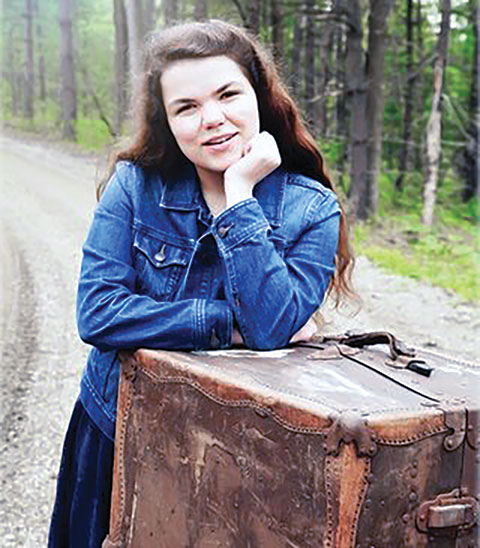Telling Stories and Communicating Science: ComSciCon-AIP 2019
Winter
2020
Meeting Notes - SPS Reporters at Science Conferences
Telling Stories and Communicating Science: ComSciCon-AIP 2019
Abigail Ambrose, SPS National Council, Associate Zone Councilor, The College of Wooster
 When I was about five years old, I wanted to write my own book about stars. Even as I read through all of the books in front of me, it still didn’t feel like enough information. This is why I chose to go into astrophysics and why I’m now pursuing research in dark matter distribution.
When I was about five years old, I wanted to write my own book about stars. Even as I read through all of the books in front of me, it still didn’t feel like enough information. This is why I chose to go into astrophysics and why I’m now pursuing research in dark matter distribution.
This fall I had the opportunity to attend ComSciCon, hosted by the American Institute of Physics in College Park, Maryland. At this workshop, participants discussed communicating science both with people in science and with a broader audience. Among the programs, we heard research presentations and explored topics like how to effectively use Twitter as a platform for science communication.
One of the things that stuck with me the most was the keynote speech, delivered by David Helfand. As part of the talk, he presented two forms of a research presentation. For the first, he walked in completely disheveled, his hair and clothes a mess. Then he launched immediately into background but didn’t define any of the jargon he used. He also couldn’t figure out how to use the laser pointer and presented a confusing slide.
For the second presentation, he walked in looking more professional and calmly moved into the subject, explaining any jargon he had to use but trying to avoid as much jargon as possible. More importantly, he began his presentation with a story on the history of the research and why it was of interest. The speaker knew his later slides might be difficult to understand, but he engaged people right from the beginning. He wanted the audience to relate to the research on a personal level before he started talking about the math, and he knew that if he started the talk by saying a word the audience didn’t even know, he would lose their attention within 10 seconds and likely never gain it back. This idea of being relatable remained a theme throughout the workshop. If you can make your research—or even yourself—relatable, people will be more interested in the science.
Not long after this talk, I had the opportunity to give a pop talk. A pop talk is a quick, one-minute talk saying who you are and what you study, much like an elevator speech. The twist is that the audience members have two signs, one that says “awesome” and another that says “jargon.” The goal is to use no jargon when you give your talk, and the signs help you keep track. When I got up in front of everybody, I was incredibly nervous. We went in alphabetical order, so I had the misfortune—or opportunity, depending on how you look at it—of being the very first to speak. In the end, it was an amazing experience. I saw people in the room hold up an “awesome” sign for me many times, although I did get the “jargon” sign a few times too.
This experience has helped me talk about science confidently, regardless of who I’m talking to. I now have a better understanding of how to quickly explain my research and why it might be important to anyone, even though it’s about concepts that many people have never even heard of before. I even gained the confidence to finally start the science Twitter account I had been thinking about since April. Telling my science story has become an incredible way for me to better understand my science and has helped people to see why it’s important.
